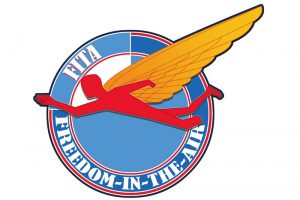As a general rule, if you are able to drive a hand controlled car, adaptations are available to allow you to fly. New technology is emerging all the time. Details of some of the popular systems follow:-
Vision Air Hand Control
The Vision Air hand controller for use by disabled pilots is a development of the American Blackwood hand controller. It is very similar to the Blackwood controller except that the lever part is in two pieces. This allows the lower part to remain permanently attached to the vertical post of the left rudder on the right hand side of the aircraft, the disabled pilot only needing to attach the upper half of the controller to the lower half using two pins to secure the connection, in order to use it.In addition, stops are fitted to limit nosewheel steering and split bushes secured by hose clamps are fitted to modify the nosewheel steering spring bungees.
Glassair Handbrake Adaption
This modification has been developed as a solution to aircraft with toe-brakes. Aircraft with steering nosewheels can be fitted with a PA28 handbrake as an addition or replacement for toebrakes. This does mean that tight ground movement is not possible, but it is a very small price to pay.
Powered flight began 1903 with the Wright brothers. Almost no other technology has moved on as fast as aviation, but the basic principle remains the same; wind moving over a curved wing to cause lift.
A number of aircraft are particularly suitable for the disabled pilot, including the Piper PA28 Cherokee 140, Cessna 172, and the Bulldog, of which the BDFA has.
The issues for the disabled pilot are mostly around access to the cockpit, and the need for hand controls to replace rudder / brake pedals in the case of those without the use of legs. These challenges are all achievable with determination and a bit of help!



